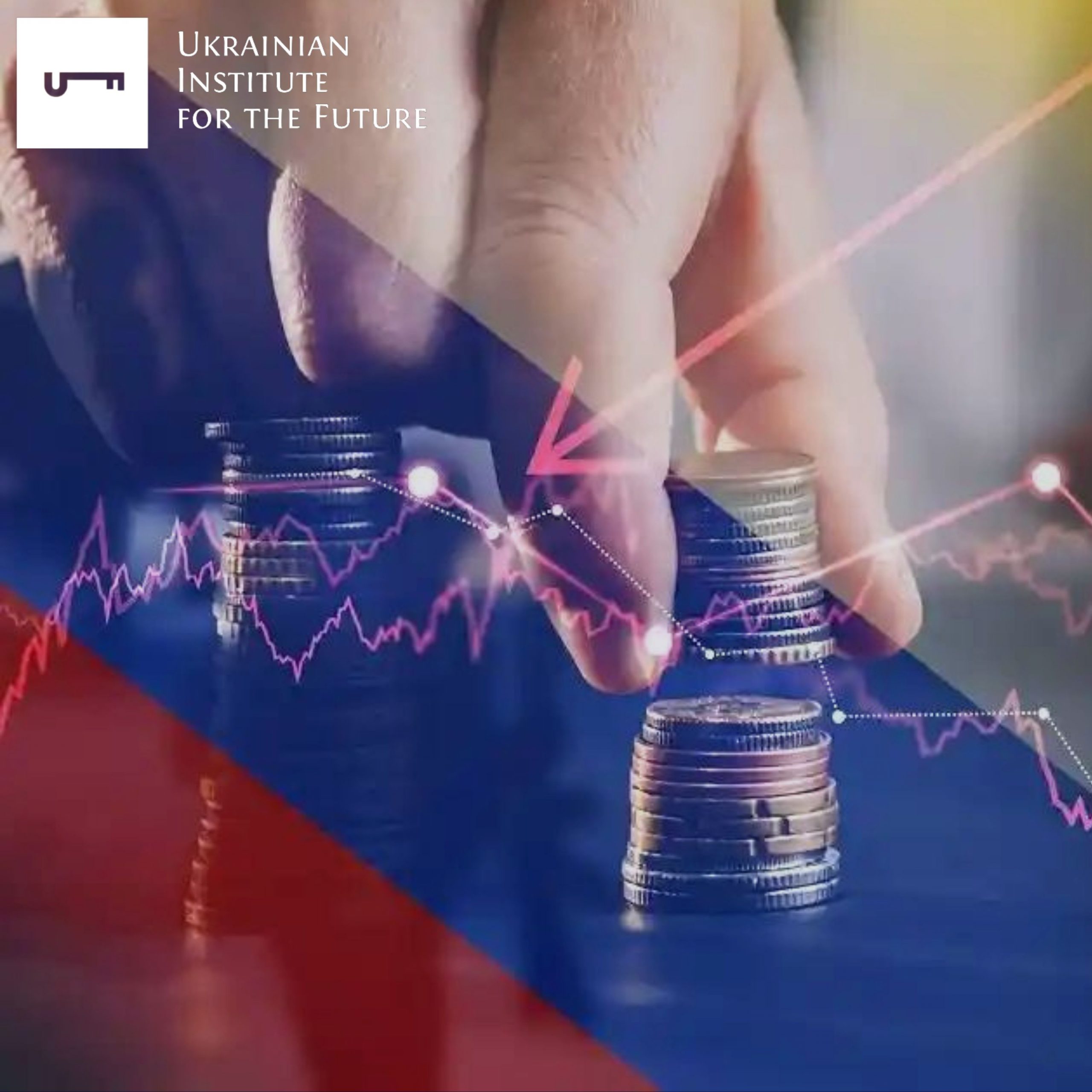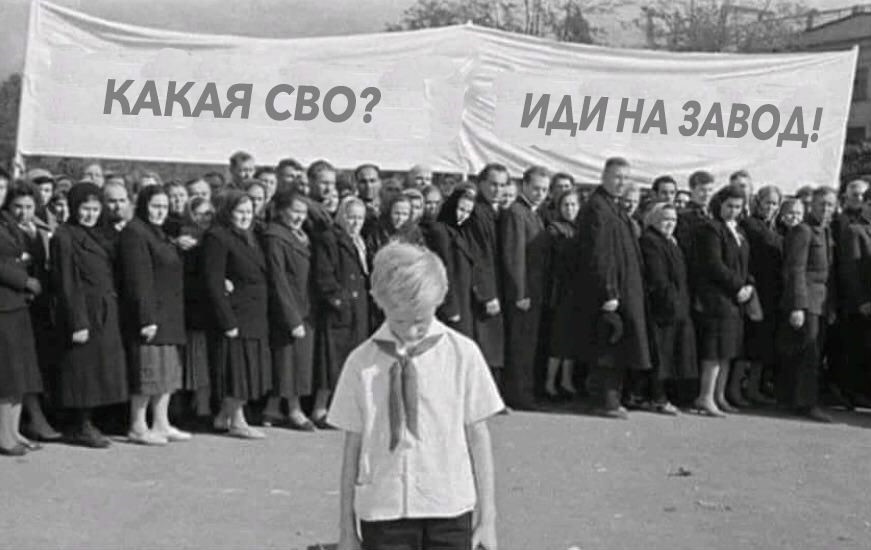Russia’s GDP grew by 4.9% in Q2 2023 compared to the same quarter in 2022, after falling by 1.8% in Q12023. This is a preliminary estimate by Rosstat. More accurate and detailed data will be published on September 8th.
It turns out that the Russian economy is growing despite the sanctions, and Russians are doing quite well, judging by official data on personal income. This does not contradict the alarmist scenarios that have been voiced since the beginning of Russia’s full-scale invasion of Ukraine.
Let’s look at why Russia’s GDP is growing to answer the question “Is everything so good in the Russian economy?”
1. “Guns before butter”
Let us start with a little bit of theory: GDP is the value of all the final goods and services that are produced on the territory of a given state in a given period of time. One way to calculate it is GDP = household consumption + government spending + gross capital formation (broadly speaking, investment) + net exports (exports – imports).
It is mainly due to the growth of government spending that Russia’s GDP is growing. Federal budget expenditure for 7 months in 2023 is 14% higher than in the same period in 2022 and 37.5% higher than in 2021.
One third of all budget expenditures is now spent on war. This includes fulfilling state defence contracts, paying soldiers, families of the fallen and so on. In 2022, Russia’s military spending is estimated at $86 billion(third place in the world, after the USA and China), in the first half of 2023 – more than $70 billion (5.58 trillion rubles).
Naturally, producing tanks and missiles increases the burden on related industries, causing a chain reaction. For example, companies in the military-industrial complex buy products from hundreds of Russian suppliers, in particular steel producers. The steel producers then increase their orders of coking coal, and so on up the chain.
At the same time, as we can see, government spending is not being used to create public goods, such as building roads, schools, universities, hospitals and so on (which in itself is not an indicator of the efficiency of the use of budgetary resources but can be used as an excuse for increasing the presence of the state in the economy).
Expenditures are being spent on the production of products that are being destroyed on a daily basis on the territory of a neighbouring state.
Payments to the military and their families stimulate consumer demand. This demand is not matched by a corresponding production of consumer goods (hence the accelerating inflation in recent months).
Several questions need to be answered to understand whether the Russian economy is developing:
- Is the Russian economy’s competitiveness increasing?
- Is it creating assets which will generate income in the future?
- Is there an increase in the total pie of wealth which will be available for distribution to different segments of the population in the future?
- What is the overall utility of the goods and services that are being created?
- Is the quality of people’s lives improving?
The answers to all these questions are obviously negative.
GDP is growing not because the economy is producing useful consumer goods that improve the quality of life of the population, but because it is producing a lot of “guns” and engaging in necropolitics. In essence, it is offering payment for death.
The added value produced over a period of time increases, but Russians’ lives do not become better and safer, quite the opposite. The economy of the Third Reich and the USSR had a similar situation.
In principle, such economic growth can create a temporary illusion of prosperity. This is the case when the state has accumulated reserves and does not need to borrow much. The key words here are “temporary” and “illusion”.
2. The effect of a low comparative base
The Q2 of 2022 was the Russian economy’s worst contraction, then GDP shrank by 4.5%, and from a low base it is easier to grow. So the dynamic growth in Q2 2023 is also a mathematical effect.
As we can see from the above, such an indicator as GDP turns out to be completely useless in certain cases, and it is wrong to draw conclusions about the state of the economy solely on the basis of figures on its change.
The things that should really be under the microscope in the Russian economy right now are:
- Overheating of the economy due to labour shortages, resulting in rising wages and accelerating inflation(especially now that the ruble devaluation may trigger an exodus of migrant workers and the Russian labour market will be under even more pressure).
We have no doubt that the Central Bank of Russia, headed by the rather conservative E. Nabiullina, will continue its policy of raising interest rates to avoid an inflationary spiral. This will inevitably have an impact on lending rates and the mortgage market.
It is too early to talk about a crisis, but given the amount of mortgages that Russians have accumulatedover the last 3 years (since the introduction of the preferential mortgage in 2020 and its extension in 2022), the expected rise in interest rates and other risks related to incomes in the Russian Federation, the situation could be very, very serious.
- Fall in exports and deterioration in trade/current account balance. The current account surplus for 7 months of 2023 decreased 6.6 times year-on-year to $25 bn, the trade surplus in goods decreased 3.2 times to $64 bn. The external price environment on the world markets is worsening, sanctions have an impact on the physical volumes of Russian exports, and the trend is still negative for Russian exporters (especially given the problems of China, which cannot accelerate its economy following COVID-19 restrictions on exports and seems to be entering a deflationary spiral).
Here it is worth mentioning separately the changing settlement structure. The transfer of sales of goods to friendly countries into rubles (yuan, rupees) causes a shortage of hard currency, since the import of certain products still requires euros and dollars, as well as the withdrawal of capital abroad. As a result, the supply of hard currency on the Russian market has been severely under pressure. This is reflected in the exchange rate of the ruble. It has fallen by 8.5% against the dollar in the last month and has lost 39.5% of its value since the beginning of the year.
- Russia’s potential budget problems in 2024. The ability of the Russian economy to generate sufficient revenues to finance budget expenditures could be seriously affected by a decline in exports, commodity quotations, and especially in oil prices. Russia’s fiscal stability and ability to finance the war in 2023 is not in doubt. However, the risks of a deteriorating situation in the Russian Federation’s budget sector are already evident from 2024, even considering expenditure constraints, increased tax pressure and rouble depreciation. Devaluation, like inflation, is good for the budget. It increases nominal revenues to the treasury. Incidentally, there is a potential conflict of interest here between the Russian Finance Ministry and the Central Bank. For the latter, price stability is the top priority.
A global crisis in which prices on commodity markets, including oil, collapse would be the worst-case scenario for Russia.
Thus, we can see that while the GDP figures are quite positive, the Russian economy is facing its own internal problems. Moreover, we can say that they are just beginning. The year 2022 turned out to be a really good year for Russia. The sanctions were imposed very gradually and not all at once, and oil prices were close to their historic highs. This year we are already seeing signs of growing fiscal problems: the 7-month budget deficit is almost at the level of the annual plan, the government is gradually tightening taxes, introducing corporate embezzlement in the form of taxes on “excess profits”, and initiating spending cuts. However, it is likely that all the most interesting things will not start until next year.




